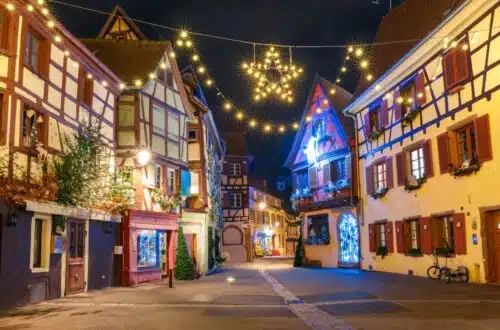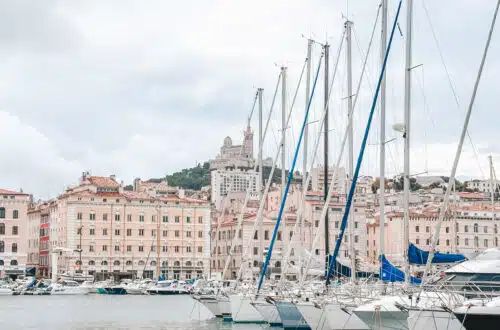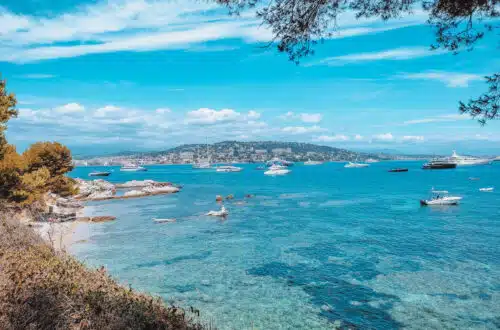Epic 4 Days Road Trip in Alsace Itinerary
Are you looking for an amazing road trip in Alsace itinerary? Then you are in the right place!
Alsace is a cultural region in Eastern France. It is famous for its medieval town squares and the Alsatian wine route.
There is a lot of information out there on which spots to visit in Alsace. To be honest, most of these itineraries are cramped and there is no time to appreciate all the places.
If you are not looking forward to visiting 5 villages per day – you are in the right spot.
For that reason, I have created a relaxed road trip itinerary for the Alsace region – and of course, collected many great travel tips for this ultimate travel guide to Alsace.
Let’s get to it!

This post may contain affiliate links. As an Amazon Associate, I earn a small commission from qualifying purchases at no additional cost to you. Read my disclaimer for further information.
Alsace Road Trip Itinerary – at a Glance
- Day 1: Strasbourg
- Day 2: Ribeauvillé
- Day 3: Colmar, Riquewihr
- Day 4: Kaysersberg, Obernai
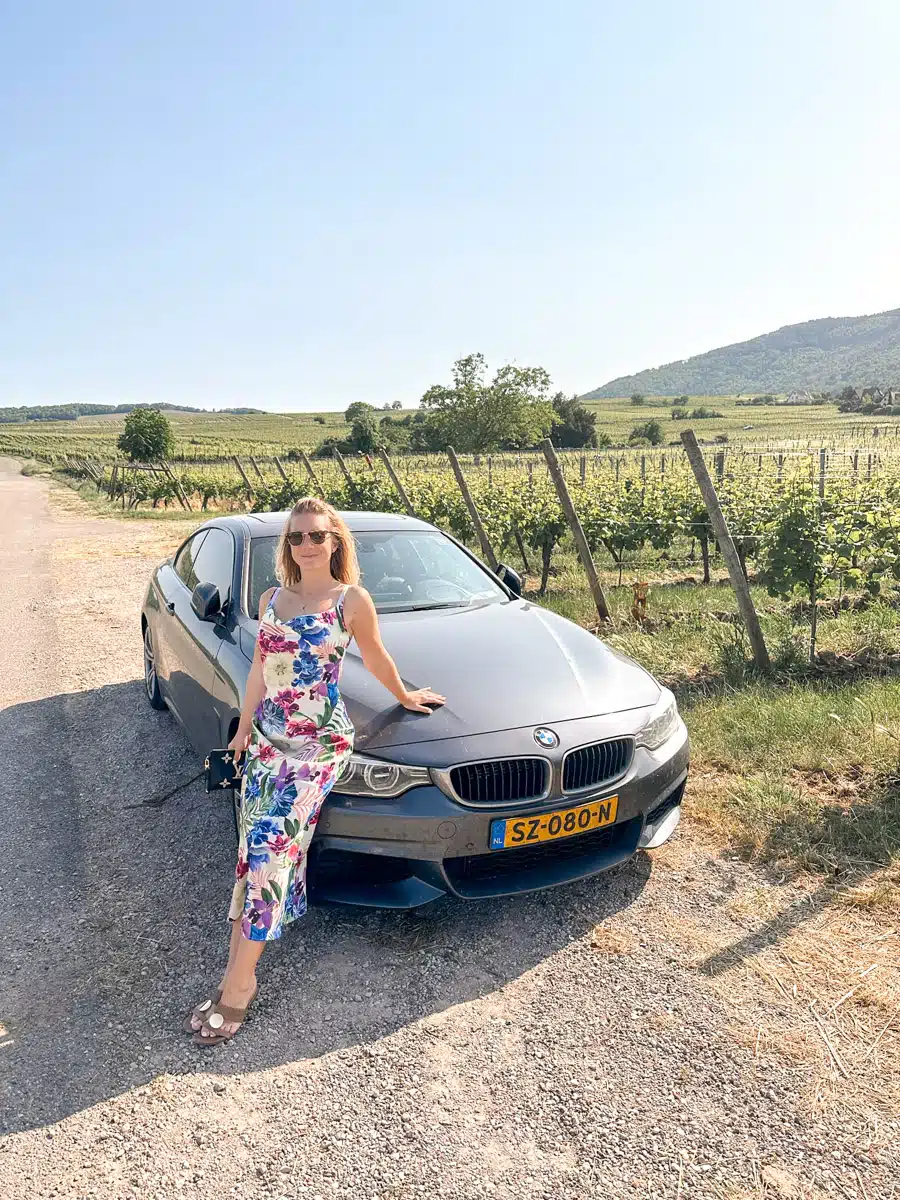
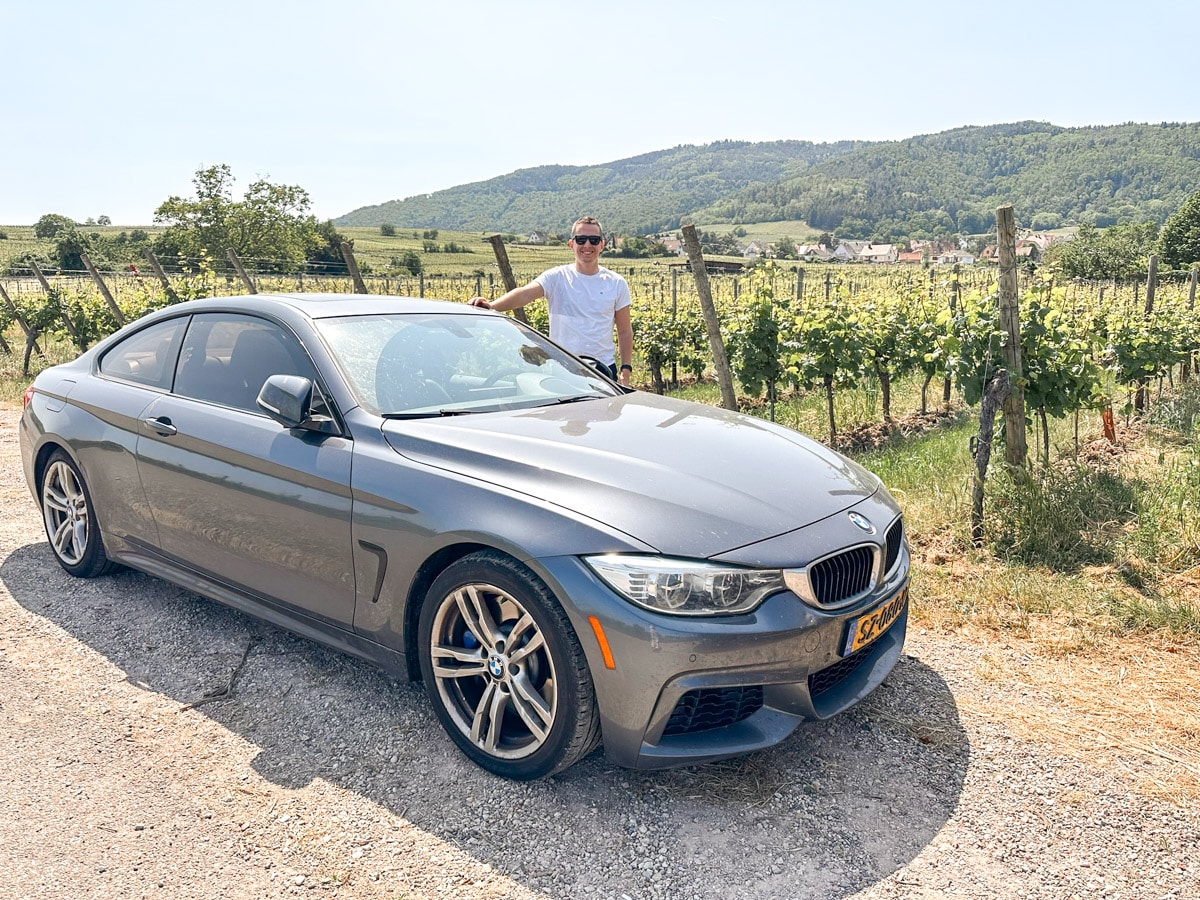
How to Get Around Alsace
To get around Alsace, you will need a (rental) car. The Alsace wine route is best seen by car.
Many villages in Alsace are quite far away from each other and hard to reach with public transport.
The biggest airport in the area is in Strasbourg. I recommend picking up a rental car in Strasbourg.
We usually book our rental cars with DiscoverCars, because they are reliable and cheap. They also have a great cancellation policy, which I appreciate.
Driving in Alsace is super easy, the roads are in great condition and everything can easily be found.
The Alsace wine route is one of the most scenic drives in France.
Where to Stay in Alsace on a Roadtrip
Most villages worth seeing in Alsace are relatively close together. Driving time is minimal (less than 20 minutes).
For that reason, we decided to stay in Ribeauvillé – and make this our base for the entire trip. It is very conveniently located and a bit more quiet than Colmar.
We opted for a day trip to Colmar instead of staying there because it is also easier to park the car for free in Ribeauvillé.
Of course, you can switch hotels multiple times and stay in different villages. To have a more relaxed trip, we opted against switching hotels, and we were very happy with our choice.
L’Hotel & Spa Ribeauvillé
We decided to stay in the beautiful L’Hotel & Spa Ribeauvillé.
The 4* hotel did not disappoint. From our room, we had a beautiful view over the vineyards and the stork’s nests in the village.
But the true highlight of this hotel was the spa. The beautifully designed spa area downstairs offered everything you could possibly need. A hot tub, a swimming pool, a sauna, a steam room, and a relaxation room.
The personnel was super friendly, and parking was free. Breakfast was also included in the rate.
There is nothing not to love about L’Hotel Ribeauvillé.



About the Alsace Wine Route
The Alsace Wine Route is also known as “Route des Vins d’Alsace.”
It is a picturesque and renowned wine route in the Alsace region of France. It is one of the oldest and most famous wine routes in the world.
Wine enthusiasts, tourists, and nature lovers from all over the world stop at the Alsace wine route.
The route is approximately 170 kilometers (about 105 miles) long. It leads through the beautiful Alsace countryside, connecting numerous charming villages and towns along the way.
The route is lined with around 70 adorable, wine-producing villages. Every village has its own unique character and architecture.
My favorite villages along the Alsace Wine Route are Riquewihr, Ribeauvillé, Obernai, and Kaysersberg.
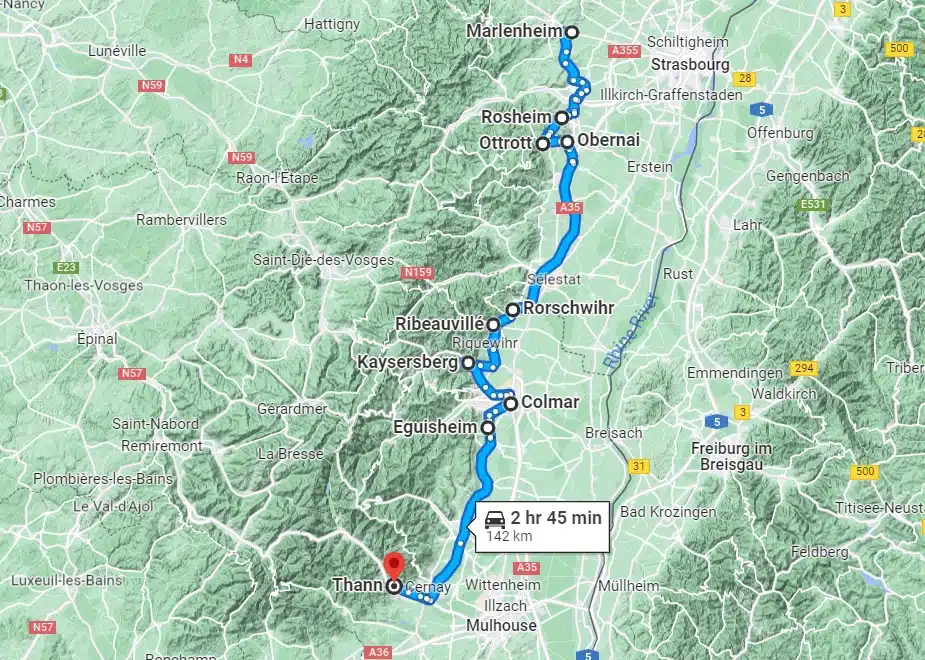
Day 1: Strasbourg
Strasbourg is a historic city located in northeastern France. It is the capital of the Alsace region.
Since you will most likely be landing in Strasbourg, I have included it in this Alsace road trip.
Strasbourg is one of the most significant cities in the European Union because it houses several key EU institutions.
Strasbourg has a rich and interesting history. It dates back over 2,000 years. The city has been influenced by both French and German cultures. You can still see it in the architecture, traditions, and cuisine.
Before heading down the Alsace wine route, there are quite a few things in Strasbourg that you can check out.
If you crave a bit more guidance and cultural info, why not participate in a tour in Strasbourg?
- Strasbourg Like a Local Customized Private Guided Walking Tour
- Strasbourg Traditional Food Tour – Do Eat Better Experience
- Discover Strasbourg’s most Photogenic Spots with a Local

Strasbourg Cathedral (Cathédrale Notre-Dame de Strasbourg)
The first thing you should check out in Strasbourg is the Strasbourg Cathedral. The awe-inspiring Gothic church is one of the most important religious monuments in Europe.
It has a striking façade, a beautiful rose window, and an impressive spire. If you go inside you can see stained glass windows and the astronomical clock.
Parts of Strasbourg are protected as a UNESCO World Heritage Site.
La Petite France
This charming neighborhood Le Petite France is definitely worth a visit.
Le Petite France is a picturesque area with cobblestone streets, half-timbered houses, and canals.
It is a typical Alsatian neighborhood, that makes for great pictures. The neighborhood offers a romantic atmosphere and a glimpse into the city’s medieval past.
Palais Rohan
The Palais Rohan is a super interesting palace. It once served as the residence of the prince-bishops of Strasbourg.
Today, it consists of three main museums: the Museum of Fine Arts, the Museum of Decorative Arts, and the Archaeological Museum.
It has an extensive art collection that is worth visiting.
Barrage Vauban
The Barrage Vauban is a historic dam and bridge. It was built by a guy named Vauban in the 17th century.
It offers some panoramic views of Strasbourg, including the cathedral and the surrounding neighborhoods.
The terrace on top of the dam is a popular spot that should be on your bucket list.
Day 2: Ribeauvillé
Ribeauvillé is a charming medieval town in the Alsace region. It is also my favorite village in Alsace – for many reasons.
Ribeauvillé is nestled close to the vine-covered hills of the Vosges Mountains. It is famous for its well-preserved historic architecture and wine-producing heritage.
The town’s medieval heritage is especially evident in the three medieval castles that overlook Ribeauvillé: Ginsberg, Saint-Ulrich, and Haut-Ribeaupierre.

Do you need travel insurance in France? Yes, travel insurance in France is highly recommended. Avoid nasty surprises and travel worry-free with EKTA. EKTA offers worldwide travel insurance with 24/7 service and no hidden fees or restrictions.
Things to Do in Ribeauvillé
Explore the Town Center of Ribeauvillé
Ribeauvillé is a small town that makes you feel like you stepped back in history. The village has a well-preserved medieval center that you can easily explore on foot.
You can wander through the narrow cobblestone streets and see charming half-timbered houses that are decorated with colorful flowers. It almost has a fairy-tale-like atmosphere.
There are many cute little shops offering local arts and crafts in the town that you should check out.
Make sure to sit down for a glass of delicious wine in one of the many bars and restaurants that line the street.
Tip: visit La Grand Rue and the Eglise Saint Gregoire.

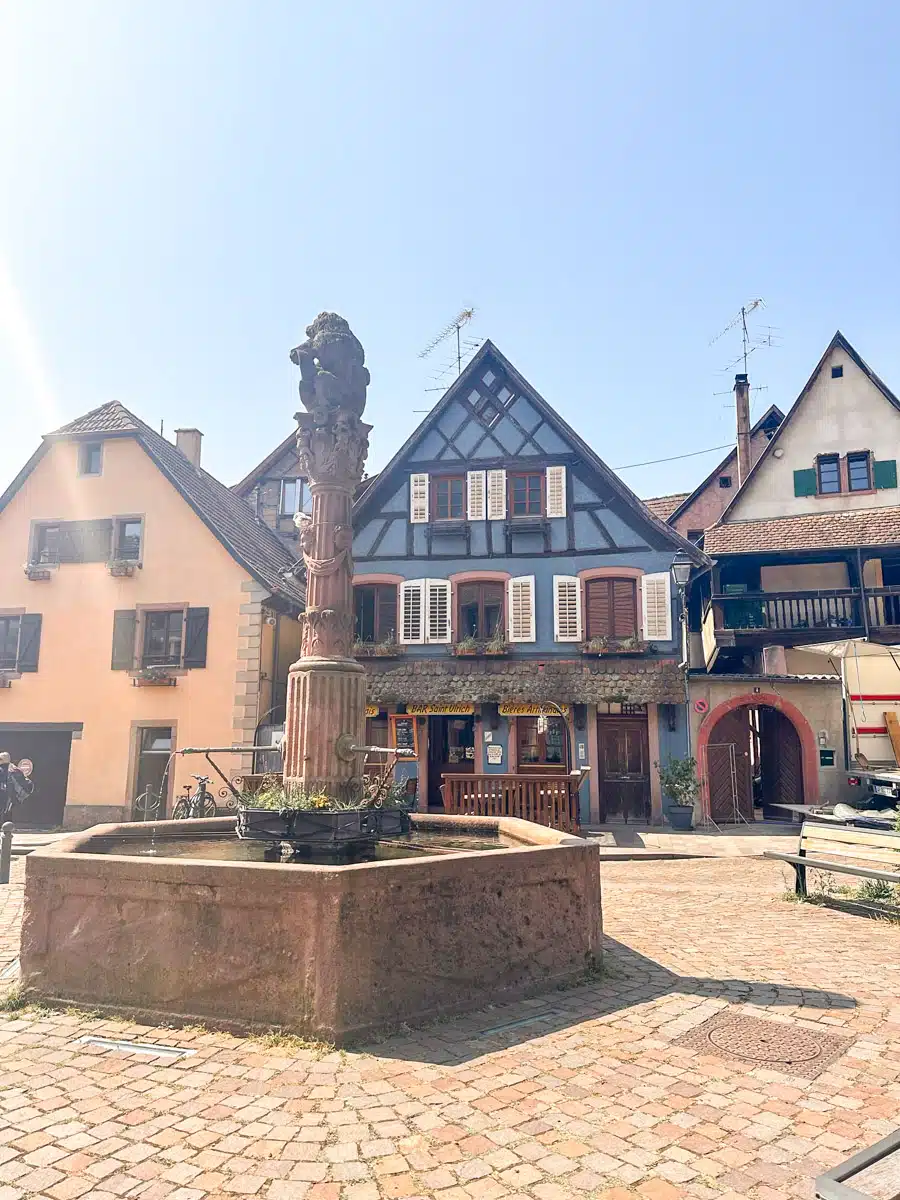

Visit the Three Castles
A cool thing to do in Ribeauvillé is hiking up to the three castles. The three medieval castles overlooking Ribeauvillé are called Girsberg, Saint-Ulrich, and Haut-Ribeaupierre.
Sadly, there are only ruins left. But the ruins offer panoramic views of the town and the surrounding vineyards. It is an amazing spot for photography.
It takes about an hour to hike up to the castles from the village. The hike is not too intense, but make sure to bring good shoes and lots of water (we forgot!).
If you love castles, you can also take a short drive to the Château du Haut–Koenigsbourg.
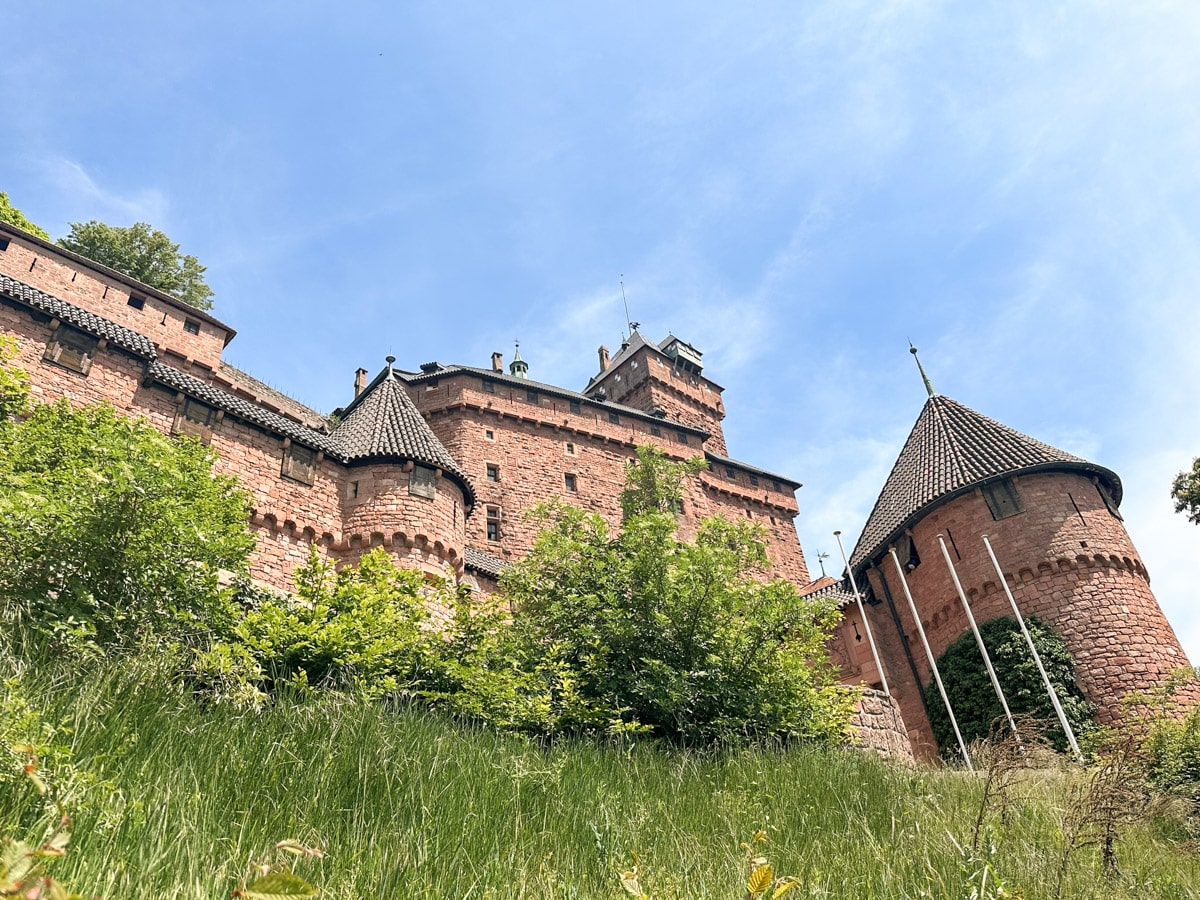
Wine Tasting
A road trip to the Alsace Wine Route would not be complete without a wine tasting.
You can discover the famous Alsatian wines by visiting the local wineries and cellars in and around Ribeauvillé. There are so many little wineries in the village, that it is not hard to find a sport for a tasting.
Don’t forget to try the dry Rieslings, aromatic Gewürztraminers, and the Pinot Gris, my favorite.
A great place for wine tasting in Ribeauvillé is Domaine Jean Sipp.
We tasted 8 different wines, and since we purchased a couple of bottles the tasting was for free.
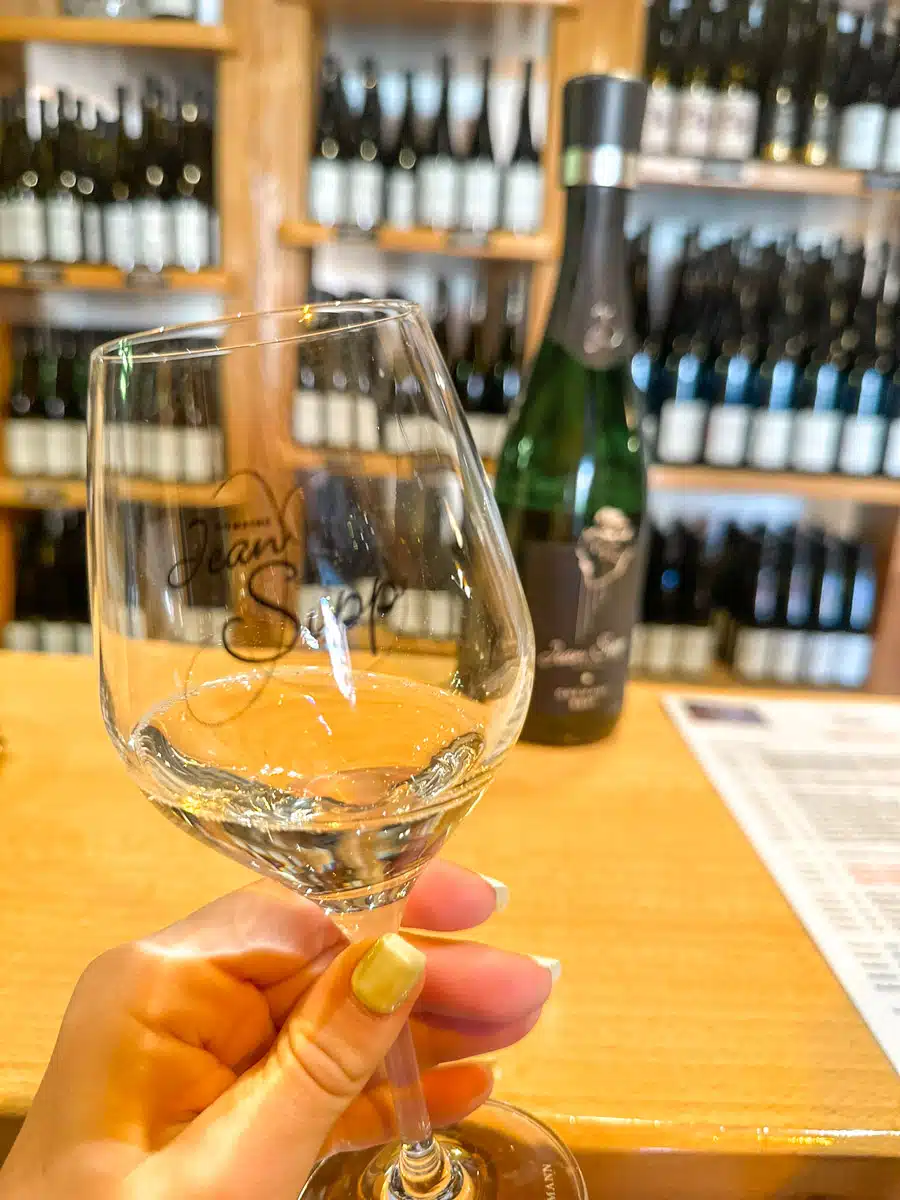
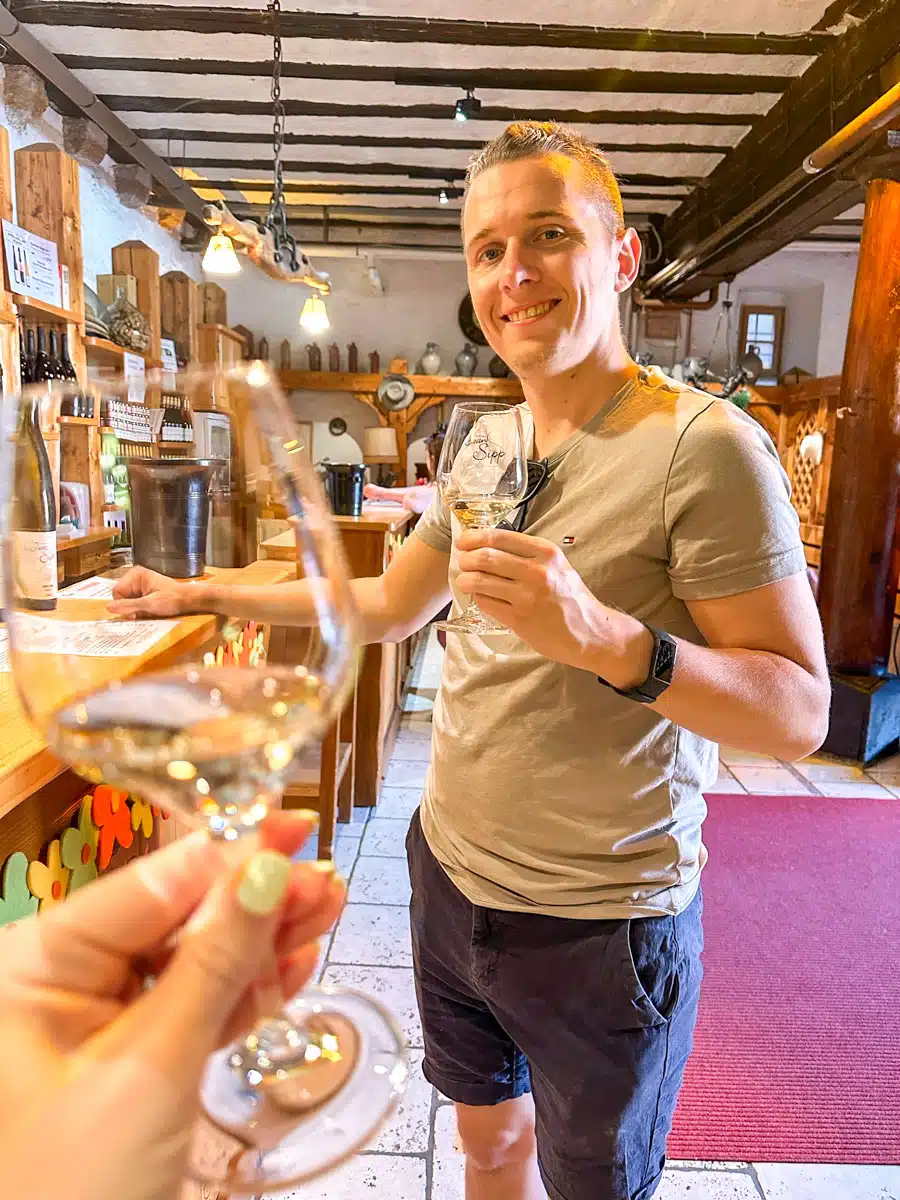

Where to Eat in Ribeauvillé
Ribeauvillé has an amazing choice of restaurants. They serve traditional Alsatian cuisine – at fabulous prices.
All of the restaurants are unpretentious and have a super sweet atmosphere.
Here are some of my favorite restaurants in Ribeauvillé:
- D’baecka Ofa Stub
- Winstub La Flammerie
- Restaurant Caveau de l’ami Fritz
- Au Cosy Bar (charcuterie boards)
- Boulangerie Pâtisserie Vilmain (lunch and pastries)





Day 3: Colmar & Riquewihr
Colmar
Colmar is a stunning town in Alsace. Colmar is known as the “Little Venice” of France – and has in recent years become insta-famous.
Colmar is renowned for charming canals, medieval architecture, and colorful flower-lined streets.
I recommend going early in the morning because it gets super crowded during the day.
Of course, you should also consider taking a guided tour through Colmar. Here are some of my favorite tours:
- Colmar: Private guided walking tour of the Historical Center
- Explore the Instaworthy Spots of Colmar with a Local
- Explore Colmar’s Art and Culture with a Local
Historic Old Town
Colmar’s historic center is full of preserved buildings, some dating back to the Middle Ages.
Half-timbered houses, colorful facades, and narrow cobblestone streets make it a great place to wander and immerse yourself in history.
Make sure to walk by the St. Martin’s Church, the Ancienne Douane, and the Marche Couvert Colmar.
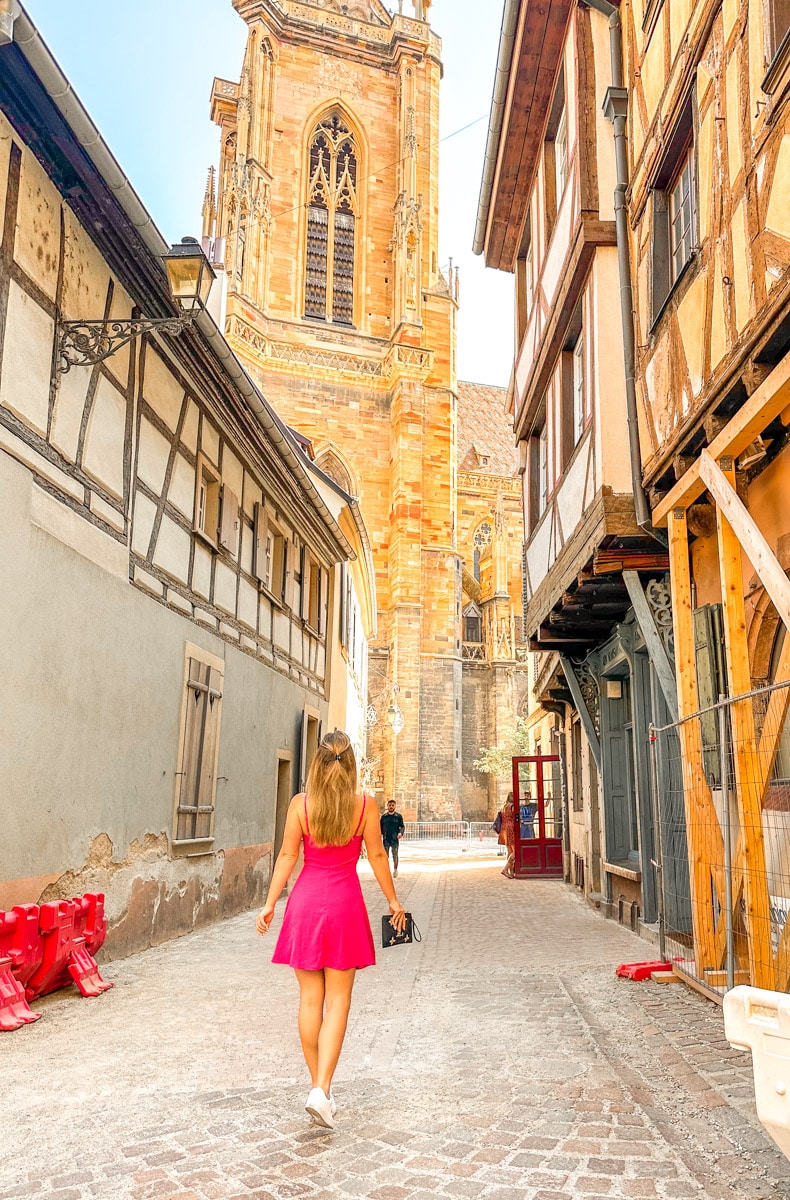

Little Venice
One of the highlights of Colmar is its “Little Venice” district. As the name already suggests, it is named for its picturesque canals lined with charming houses.
You can take boat tours along the canals and explore the town on the water. It is also a great place for a scenic walk or a delicious lunch.
Sadly, later in the day, this part gets really crowded. Make sure to be there early for a great experience.
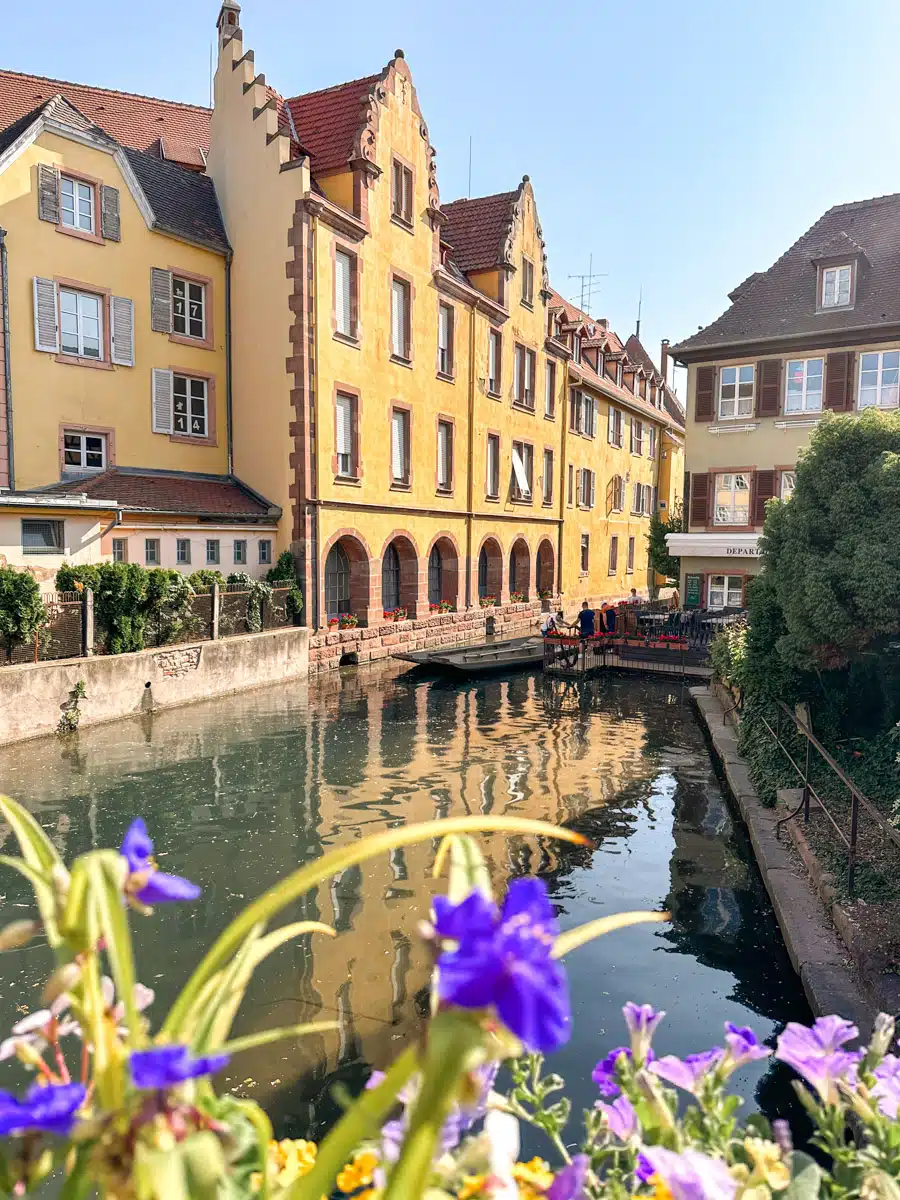
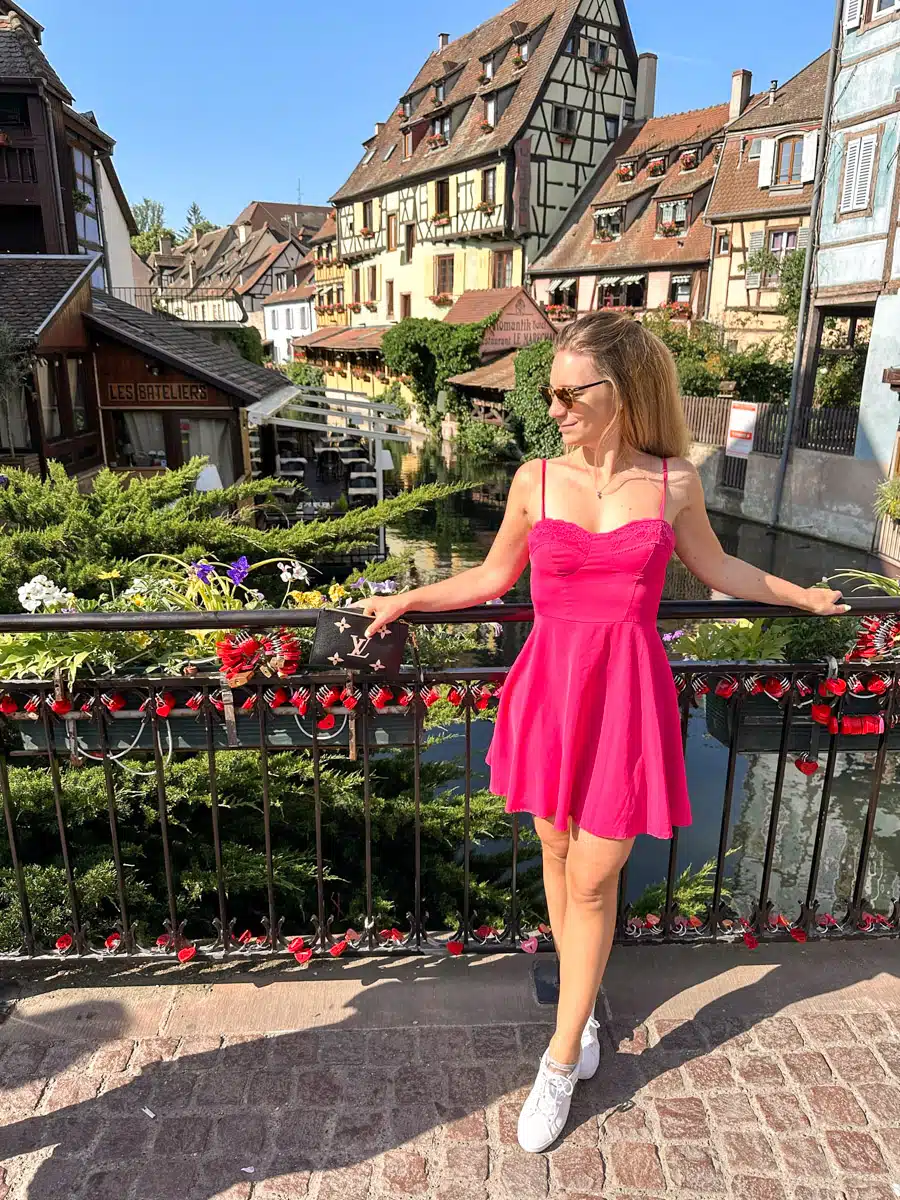
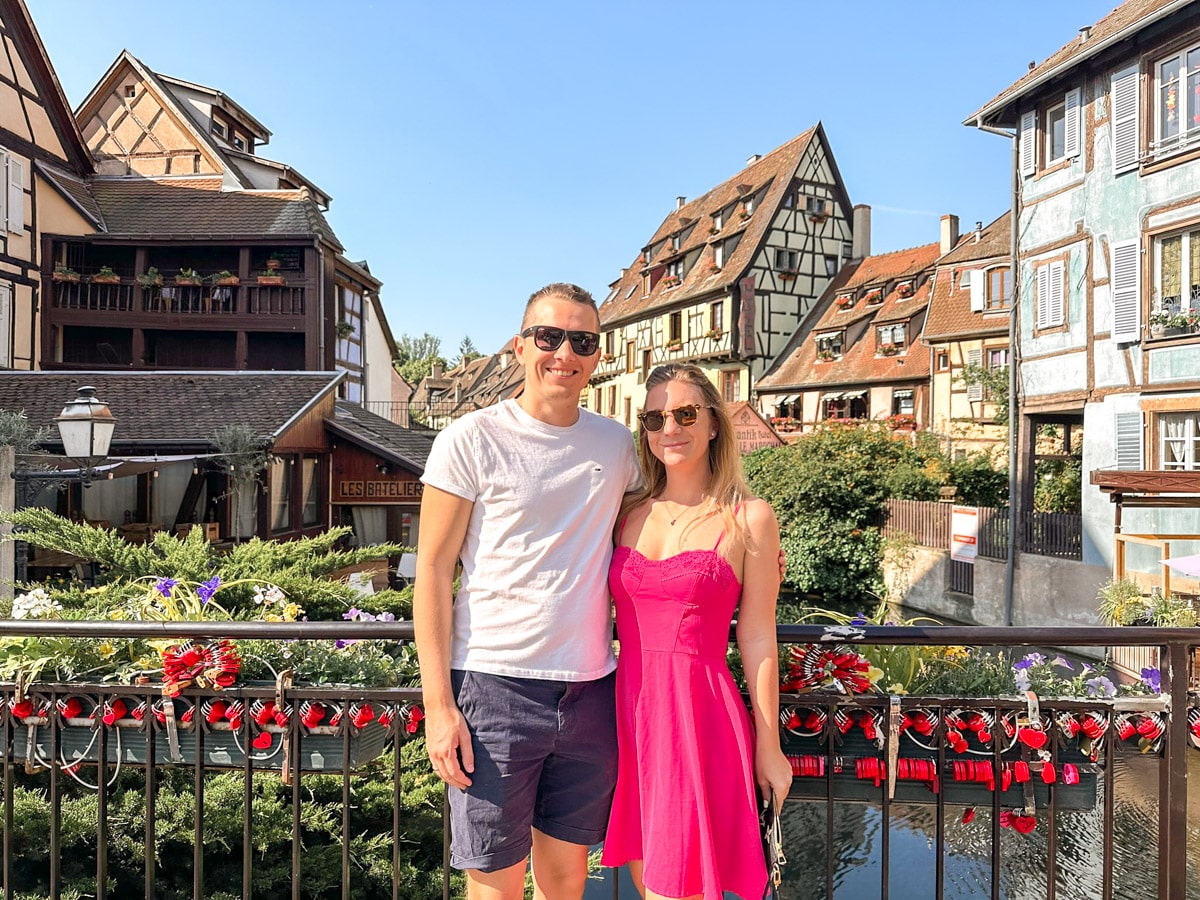
Unterlinden Museum
The Unterlinden Museum is a must-visit attraction in Colmar.
It is housed in a former 13th-century Dominican convent. The Unterlinden Museum is home to an impressive collection of art and artifacts.
The most important piece is the Isenheim Altarpiece, painted by Matthias Grünewald in the early 16th century.
Shopping
Colmar is probably the best place in Alsace if you want to do some shopping.
Lots of cute little shops have decorated storefronts and cute stuff to bring home.
Rue Des Clefs is the biggest shopping street in Colmar, make sure to hop by.


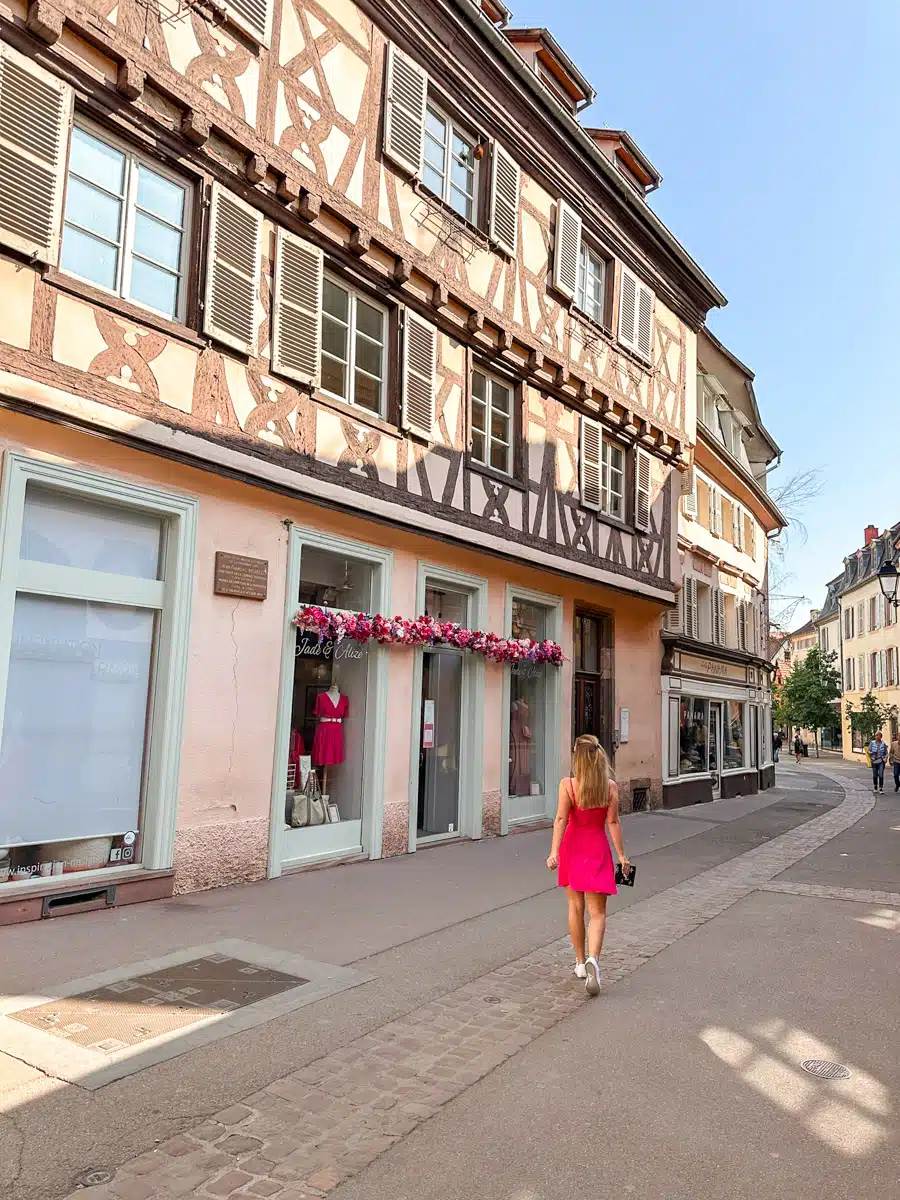
Riquewihr
Riquewihr is a stunning medieval village that needs to be on everyone’s Alsace itinerary. Riquewihr is known as one of the most beautiful villages in France.
Riquewihr is located in the heart of the Alsace Wine Route. It is surrounded by vineyards and rolling hills.
The village’s history dates back to the 8th century, and wandering through its narrow alleys is like stepping back in time.
Riquewihr is, just like most Alsatian towns, characterized by its half-timbered houses, colorful facades, and flower-filled balconies. It has a fairy-tale atmosphere.
The town has several landmarks you should check out, such as the Dolder Tower. It is a medieval watchtower that offers great views of the village and surrounding vineyards.
Riquewihr is a great place for wine tasting. The winery Dopff au Moulin is one of the most important in the village, and they welcome visitors for tastings every day.
When we visited Riquewihr, it was sadly super crowded, so it was not my favorite village on the Alsace itinerary.
If you need some guidance, make sure to book a Riquewihr Private Walking Tour.
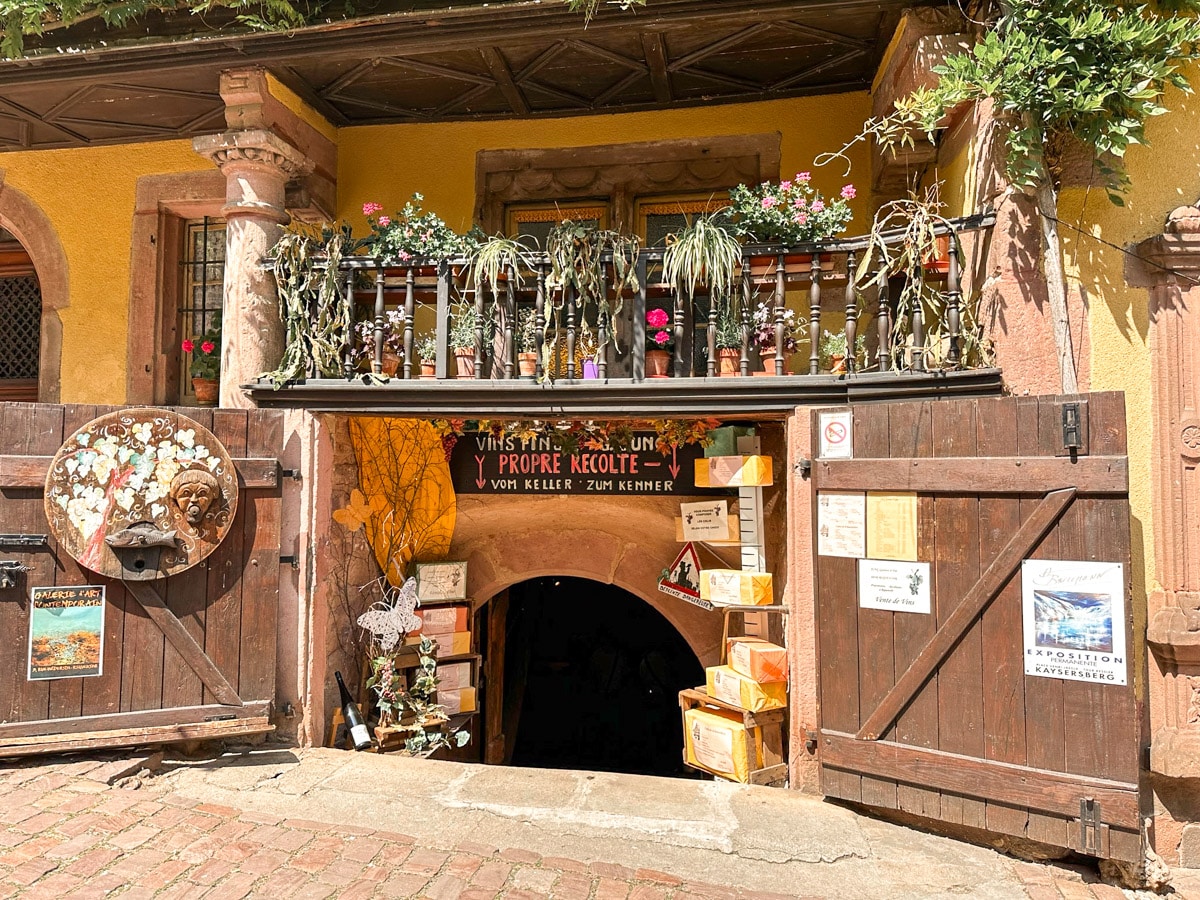


Day 4: Kaysersberg & Obernai
Kaysersberg
Kaysersberg is another charming and picturesque town in Alsace. You can find it along the eastern slopes of the Vosges Mountains.
Kaysersberg is located in the valley of the Weiss River.
Kaysersberg has a rich history dating back to the 13th century. The village was founded by the Holy Roman Emperor Frederick II. The town’s name means “Emperor’s Mountain.”
The heart of Kaysersberg is a lovely old town, that you can check out on foot. On the central square, you can find local markets and events.
One of the town’s most impressive landmarks is the ruins of Kaysersberg Castle. They are perched on a hill overlooking the town.
The castle is mostly in ruins and not super spectacular. However, it offers breathtaking views of the vineyards and mountains. It is definitely worth the hike.
If you need some guidance around the village, I can recommend booking the Kaysersberg Private Walking Tour.
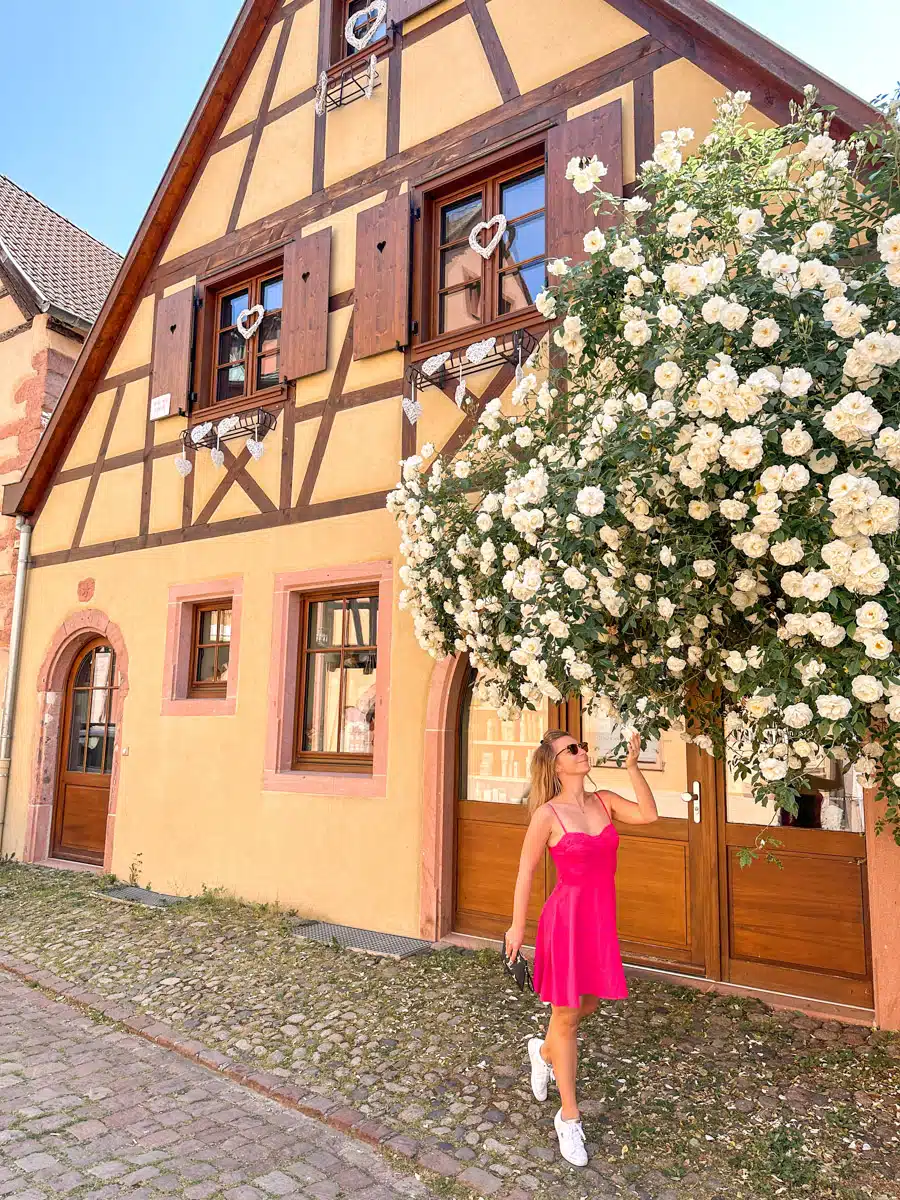
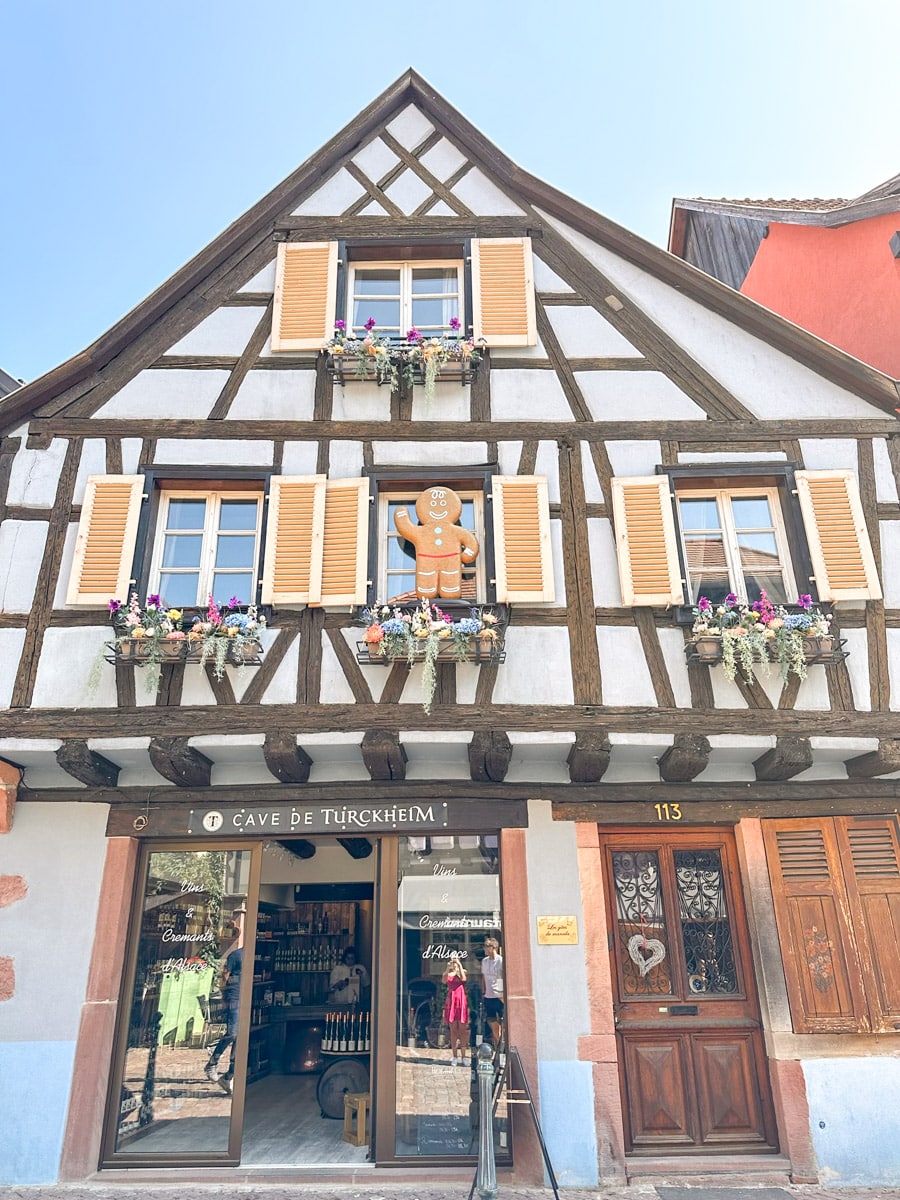
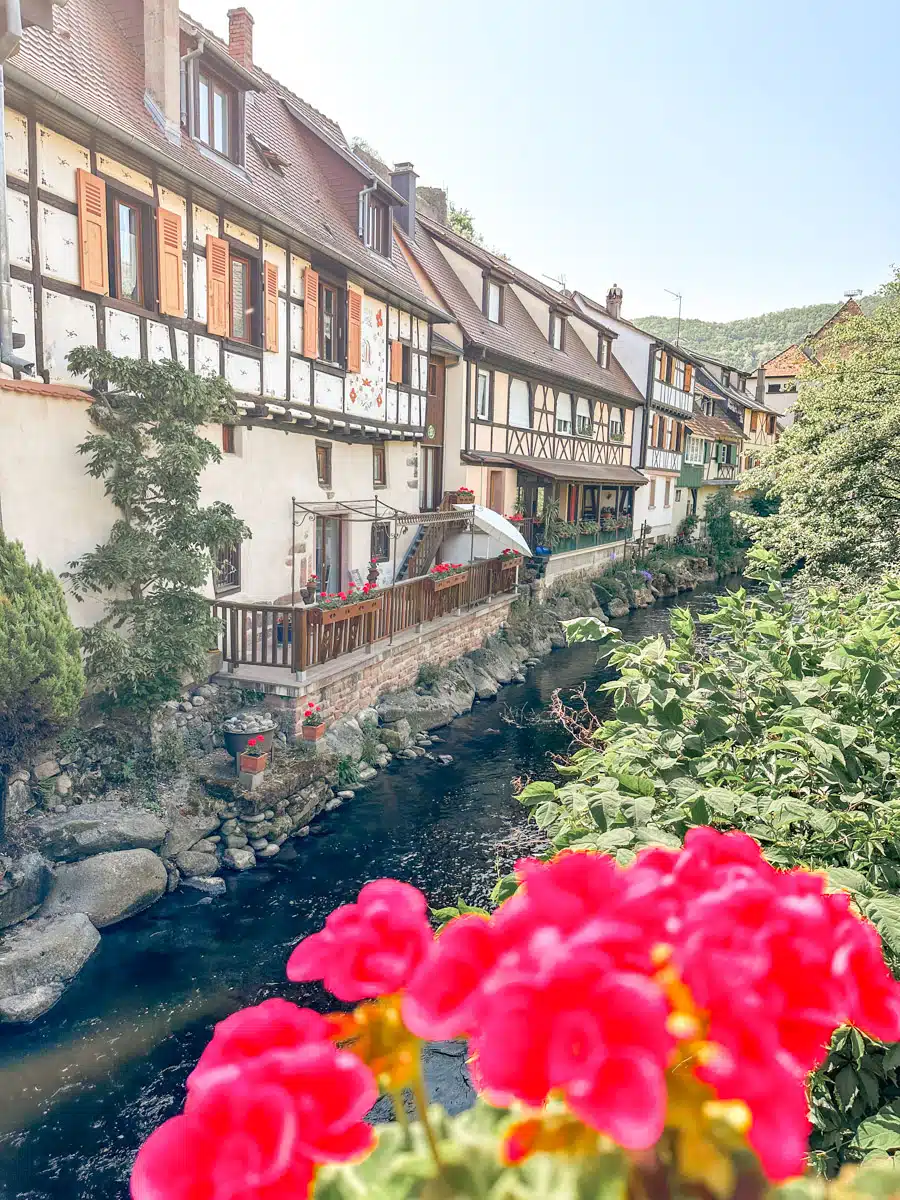
Obernai
Since this is the last day of the Alsace itinerary, the Alsace road trip will take us back to Strasbourg. On the way, we decided to stop in Obernai.
Obernai’s history goes back to Roman times. The town has been influenced by the Germans and the French due to its good location along important trade routes.
The heart of Obernai is the Place du Marché (Market Square). It is a lively and picturesque square surrounded by historic buildings, restaurants, and cafes. This is a great spot for a late lunch or early dinner.
One of the town’s most interesting landmarks is the St. Odile Church. It is a stunning Gothic church in the middle of the town.
The Mont Sainte-Odile is a nearby mountain. It is famous as a pilgrimage site and a great spot for hiking enthusiasts.


What to Eat in Alsace
Alsace is a region known for its delicious and unique cuisine. The dishes are an interesting blend of German and French influences. We have loved Alsatian food – and I am sure you will too.
Here are some of the dishes you must try in Alsace:
- Choucroute: Delicious cabbage cooked with different meats, such as sausages, pork, and sometimes ham or bacon.
- Tarte Flambée (Flammekueche): Also known as the “Alsatian pizza.” It is a thin flatbread and mostly topped with crème fraîche, onions, and bacon. Of course, there are many different variations available in traditional Alsatian restaurants.
- Baeckeoffe: This is a traditional Alsatian casserole made with layers of sliced potatoes, onions, and meat.
- Coq au Riesling: This reminds me a bit of the French coq au vin. It is made from a chicken cooked in Riesling wine along with mushrooms and onions.
- Kugelhopf: This is a traditional Alsatian yeast cake, sometimes served with raisins.
- Munster Cheese
- Asparagus: In spring during the Asparagus season you can find many dishes with delicious vegetable in Alsace.
- Crémant D’Alsace: This is the Alsatian version of champagne. Since producers are only allowed to call drinks from the Champagne region champagne, other sparkling wines are called Crémant.

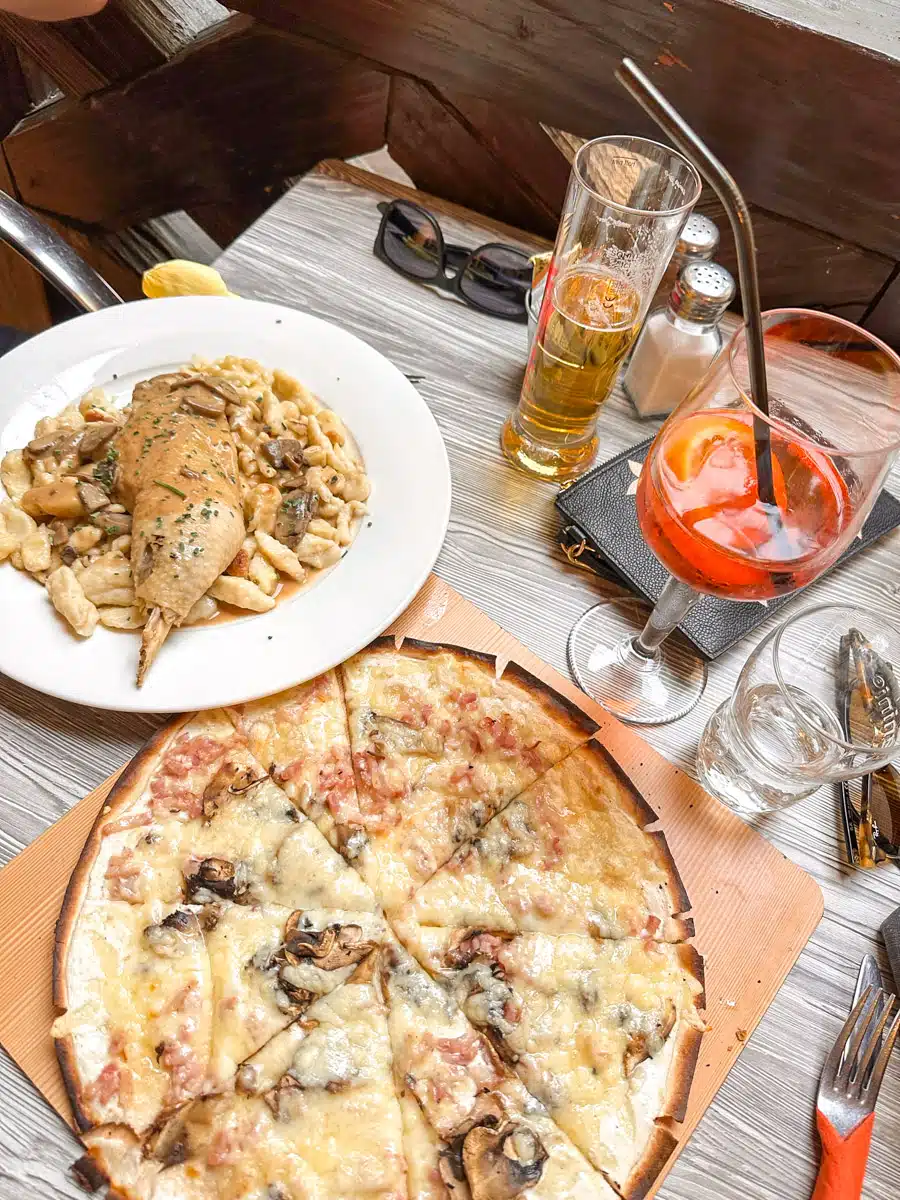

Parking on the Alsace Roadtrip
By now, you are probably wondering about the parking situation on this road trip through Alsace.
In this Alsace itinerary, you will be visiting many smaller villages. Much to my surprise, they have big, well-organized parking spots. They are usually a bit outside the city center, so there is a bit of walking involved.
Parking costs around 1 – 3 € per hour.
Make sure to book a hotel with parking spots for overnight, otherwise, it might get expensive.
How Much Time Do You Need in Alsace for a Road Trip
I think you should spend at least 4 days in Alsace on a road trip.
This 4-days in Alsace itinerary leaves some room for relaxation and time to appreciate the villages.
Of course, the more time you have, the better. There is much more in Alsace to be seen and done than what I could fit into this itinerary.
If you want a truly relaxed Alsace itinerary, I suggest staying for a week. This also leaves some more time for wine tasting, hiking in the National Park and relaxing.
The Alsatian wine route is a place to relax, enjoy and unwind. Make sure to allow ample time for your visit.
Best Time to Visit Alsace
The best time to visit Alsace for a road trip depends on your preferences. Each season in Alsace has its own charm, and there is no bad time to visit Alsace.
However, here are a couple of things to keep in mind when planning your road trip to Alsace:
- Spring (March to May): Spring is a lovely time to visit Alsace. The region comes alive with colorful flowers and blossoms. The weather is mild, making it perfect for exploring the picturesque towns and vineyards. Spring also marks the beginning of wine festivals and outdoor events. We visited at the end of Spring and absolutely loved it.
- Summer (June to August): Summer is a popular time to visit Alsace due to its warm and sunny weather. The days are long and you can sit outside sipping wine in the evening. Sadly, it can get crowded during peak tourist season. I would not recommend going in the Summer for that reason.
- Autumn (September to November): Autumn is a fantastic time to visit Alsace. If you enjoy the vibrant colors of fall foliage – this is your season. The vineyards and landscapes turn golden, making it a lovely time to explore the wine route. It’s also harvest season, so you can participate in wine festivals and taste freshly made wines.
- Winter (December to February): Winter in Alsace is especially enchanting. During the Christmas season, the towns are beautifully decorated with festive lights and Christmas markets everywhere.
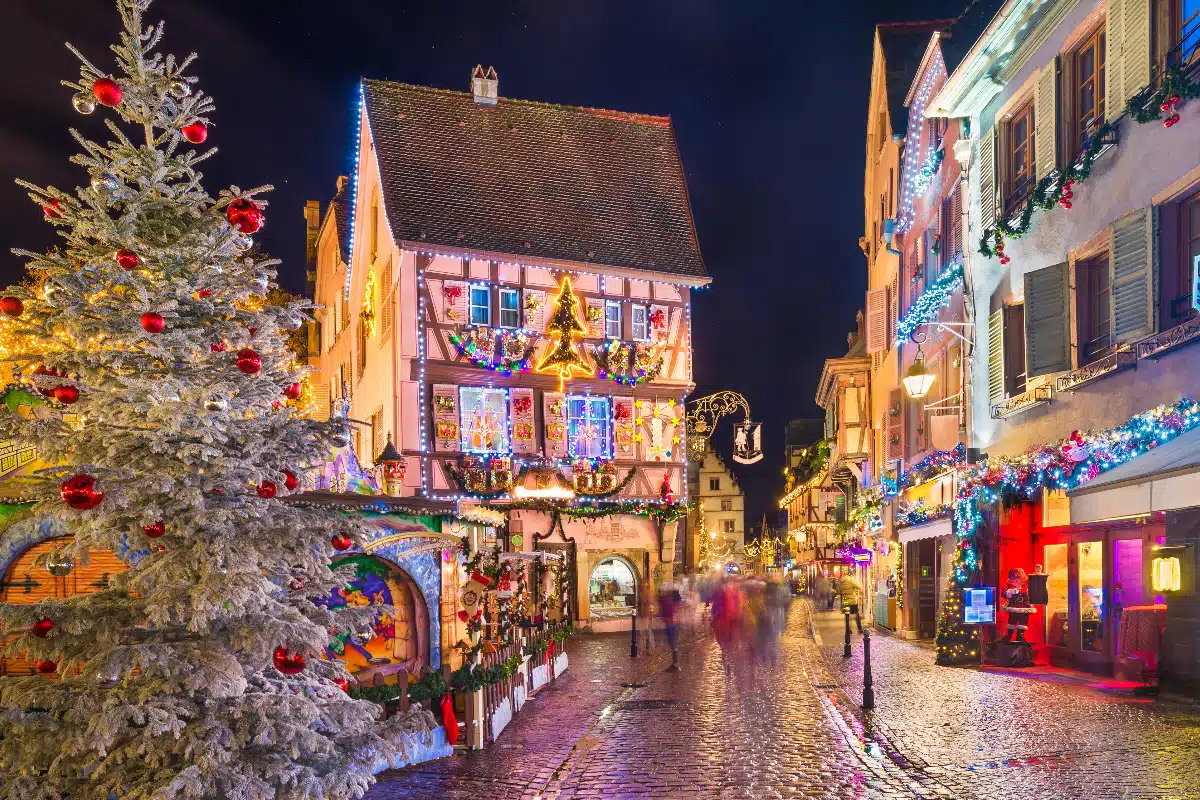
Conclusion: Road Trip in Alsace Itinerary
This brings me to the end of my Alsace road trip itinerary.
Overall, I can recommend taking this trip to everyone. My husband and I both felt like it was the best trip we took all year.
The villages are charming, the locals are friendly and the scenery is beautiful. There is nothing pretentious about Alsace, and that is precisely why we loved it.
If you can’t get enough of traveling to France, I have good news for you.
Looking for more France content? Check out:
- Champagne Itinerary
- Is Paris Worth Visiting?
- Alsace Itinerary
- Is Alsace Worth Visiting?
- Best Time to Visit Alsace?
- Best Time to Visit Champagne?
- Champagne Tours from Paris
- One Day in Cannes
- Cannes Cruise Port
- Is Cannes Worth Visiting? An Honest Review
- One Day in Marseille From Cruise Ship: Ultimate Itinerary
- One Day in Corsica Itinerary: From Ajaccio Cruise Port
FAQ: Alsace Road Trip Itinerary
I recommend staying at least for 4 days in Alsace. The beautiful region has a lot to offer, and you could easily busy yourself for a week in Alsace. Highlights like Strasbourg, Colmar, Ribeauvillé, and Riquewihr should definitely be on your Alsace itinerary.
There is no bad time to go to Alsace, but Spring, Fall, and around Christmas are ideal. Alsace in summer is very crowded, so I would avoid going then. Especially during Christmas times, Alsace is stunningly beautiful.
The four wonders of Alsace are its stunning vineyards, charming medieval towns like Strasbourg and Colmar, the impressive Haut-Koenigsbourg Castle, and the picturesque Route des Vins (Wine Route) offering breathtaking views and world-class wines.
Many people refer to Eguisheim as the most beautiful village in Alsace. Personally, I find Ribeauvillé and Kaysersberg to be the most charming villages in Alsace. Colmar is also extremely enchanting but gets a bit too crowded.
Alsace is uniquely characterized by its blend of French and German culture, evident in its architecture, cuisine, and traditions. The region’s picturesque vineyards, charming medieval villages, and the harmonious coexistence of both cultures make it a captivating destination, renowned for its beauty, wines, and distinctive Alsatian dialect.
No, Alsace and Colmar is not the same. Alsace is the name of the region in France. Colmar is a city in the Alsace region. Many people do think of Colmar when they hear Alsace and vice versa.
The most famous specialty of Alsace is the flatbread pizza called Flammekueche. It is a very thin pizza topped with sour cream, onions and bacon. Traditional Alsatian restaurants, called Winstub, serve the pizza.
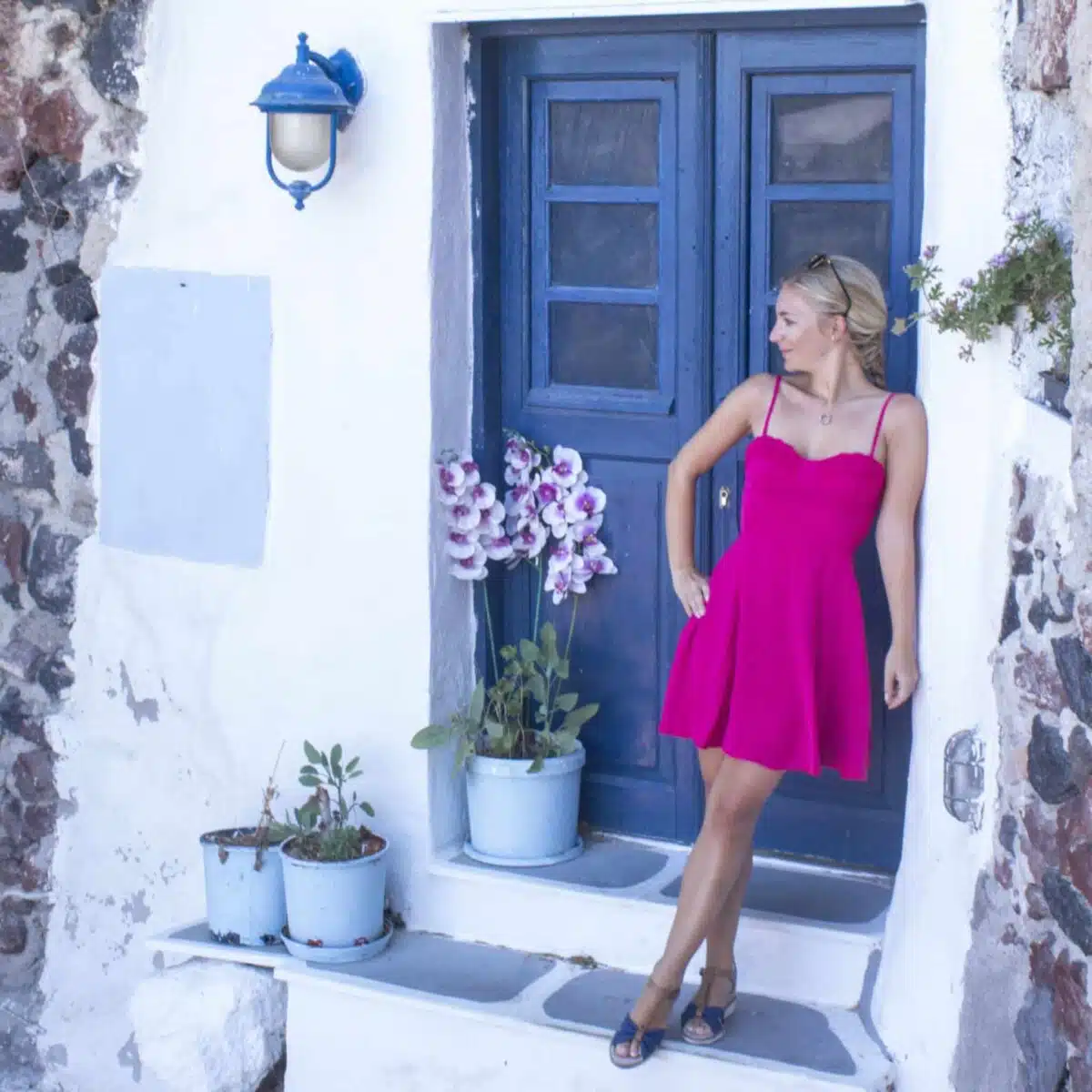
About the Author
Sabrina is a passionate travel blogger and content creator, based in the Netherlands. She spends most parts of the year abroad at various destinations with her husband.
She provides slow-paced itineraries that focus on quality over quantity. Sabrina wants to help her readers to get more out of their travel experiences – while doing less. Read more.


